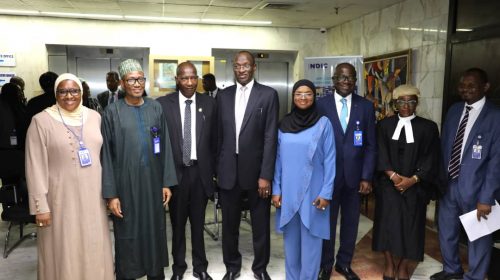World’s largest aircraft launched

A giant six-engine aircraft with the world’s longest wingspan – surpassing Howard Hughes’ infamous Spruce Goose – took off from California on its first flight on Saturday.
The behemoth, twin-fuselage Stratolaunch jet lifted off from Mojave Air and Space Port and climbed into the desert sky 70 miles north of Los Angeles. It landed two hours later.
Stratolaunch Systems chief executive Jean Floyd said the aircraft made a “spectacular” landing. The company, founded by billionaire Microsoft cofounder Paul Allen, who died in October, is vying to be a contender in the market for air-launching small satellites.
“It was an emotional moment for me, to personally watch this majestic bird take flight, to see Paul Allen’s dream come to life in front of my very eyes,” Floyd told a teleconference briefing.
As the plane lifted off, Floyd said, “I did whisper a ‘thank you’ to Paul for allowing me to be part of this remarkable achievement.”
The aircraft is designed to carry as many as three satellite-laden rockets under the center of its enormous wing, which stretches 385ft, or 117 meters. At an altitude of 35,000ft, the rockets would be released, ignite their engines and soar into space.
The advantages of such air-launch systems include being able to use airports and avoid the limitations of fixed launch sites which can be affected by weather, air traffic and ship traffic on ocean ranges.
The plane took off shortly before 7am on Saturday and achieved a maximum speed of 189mph at up to 17,000ft, the company said. Test pilot Evan Thomas of Scaled Composites, which built the aircraft, said the flight was “fantastic” and for the most part the plane flew as predicted.
“The airplane very nicely, smoothly rotated and really just lifted off the ground,” he said. “It definitely was ready to fly and wanted to fly and climbed out quickly.”
Thomas said there were “a few little things that were off-nominal but really for a first flight it was spot-on”. He did not specify what those things were, and briefing participants did not take questions.
Allen founded Stratolaunch Systems in 2011, after funding the development of the experimental air-launched SpaceShipOne, which in 2004 became the first privately built manned rocket to reach space.
After Allen’s death, Stratolaunch dropped plans to develop its own rocket engine and a family of launch vehicles, focusing instead on getting the giant plane airborne and launching Northrop Grumman’s proven Pegasus XL.
The Stratolaunch aircraft emerged from its Mojave hangar for the first time in May 2017 and proceeded through ground tests, including taxiing and rolling down a runway at near-takeoff speeds.
Powered by the same type of engines used by Boeing 747s, the aircraft is designed to take off at a maximum weight of 1.3m pounds (590 metric tonnes). Its twin fuselages are 238ft long.
The previous wingspan leader was Hughes’ second world war-era eight-engine H4 Hercules flying boat, which was nicknamed the Spruce Goose. Surviving in an aviation museum, it has an approximately 320ft wingspan but is just under 219ft long.
While Stratolaunch calls its aircraft the world’s largest, other airplanes exceed it in length. They include the six-engine Antonov AN 225 cargo plane, which is 275.5ft long, and the Boeing 747-8, wh ich is just over 250ft long.
The Guardian (of London)






Leave a Reply